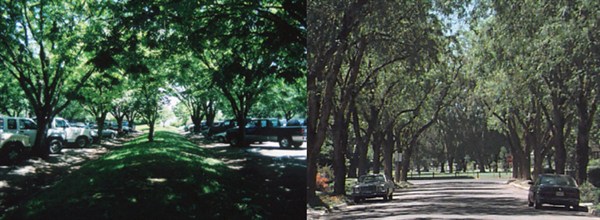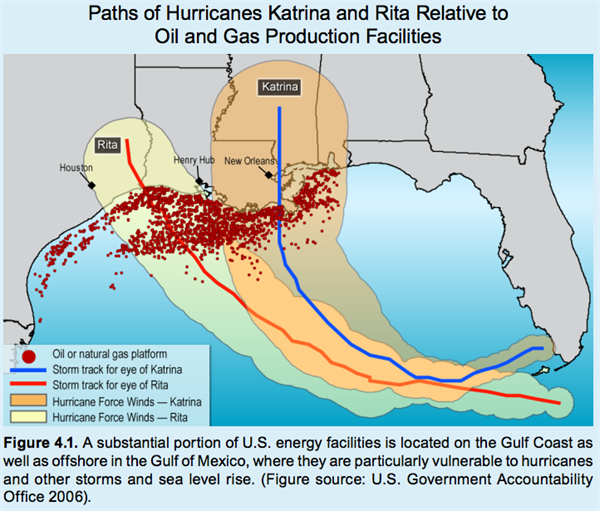Imagine a US where the streets are lined with trees and office workers start their shifts at night. Those are just two changes the US government could implement to cut emissions and make the country more resilient to the impacts of climate change, according to a new report.
The US National Climate Assessment (NCA), released yesterday, illustrates how climate change is already having an impact across the US, with corn yields are dwindling in Iowa and drought in the arid southwest intensifying. President Obama ordered the report as part of his landmark climate policy package – the Climate Action Plan – announced last year. While climate change was “once considered an issue for a distant future” it has now “moved firmly into the present”, the report says.
Transport
The majority of the US’s greenhouse gas emissions come from transport – just over a third of the country’s total, the report says. That means any plan to cut the US’s emissions must involve changing how its population gets around.
The NCA says the government should do more to encourage more vehicles run on biofuels or electricity to help reduce transport emissions. More can also be done to improve vehicles’ energy efficiency, it argues.
Not only is the transport sector one of the US’s largest emitters, it’s also one of the most vulnerable to the impacts of climate change, according to the NCA. Floods, droughts, and other extreme weather events – all of which can be exacerbated by climate change – can severely disrupt transportation, inconveniencing individuals and costing the US economy millions of dollars.
More highways should be built to ensure that when one road is closed there are alternative routes for lorries to deliver their goods, the NCA says. Doing so would show the US had learned from past mistakes, such as when flooding caused the closure of two interstate highways in 2007, costing the US economy an estimated $75 million.
Improving walkways could also help get people out their cars and ease congestion. Urban forestry initiatives can reduce temperatures in abnormally warm cities – known as the “urban heat island effect” – making it more attractive for people to walk around densely populated areas.

Developing more advanced systems to monitor weather and road conditions is also necessary. Providing road agencies with up-to-the-minute information would allow them to send out warnings and dispatch help in the case of flooding or snowfalls, the NCA says.
Energy
Transport isn’t the only sector the government should target, the report says.
While emissions from the power sector have dropped in recent years, electricity generation was still responsible for around 32 per cent of the US’s emissions in 2012. So if the US wants to cut emissions, it needs to make its power stations less polluting.
That means ramping up the amount of electricity generated from renewable sources. Wind, solar, hydropower, and nuclear all have the potential to deliver large chunks of low carbon electricity across the US.
That’s encouraging, because no country – including the US – can burn coal and gas beyond the end of the century without carbon capture and storage technology, the report says. Burning coal, natural gas, and oil for electricity and heat is the single largest source of global greenhouse gas emissions, according to the US’s Environmental Protection Agency. With energy demand projected to increase, the space in the global carbon budget to burn such polluting fossil fuels is increasingly squeezed as time goes on.

Power generators are also highly vulnerable to the impacts of climate change as rising sea levels and intense droughts threaten production. That gives policymakers yet more reason to transform the US’s energy sector, the NCA argues.
For instance, coastal barriers could be built to protect power stations from rising sea levels, and power stations should also be insulated protect them from extreme temperatures, it suggests.
But in some cases those tweaks won’t be enough, the NCA says. Vulnerable installations may need to be relocated, elevated, or renovated to make them more resilient to storms and floods. Companies should also be encouraged to abandon the traditional nine-to-five working day where possible so employees can use power outside of peak times – reducing the need for fossil-fuelled power stations.
Human health
There’s another good reason for the US government to implement climate policies, according to the report: improving the nation’s health.
Cutting transport and energy sector emissions means less air pollution, which in turn can alleviate ailments such as asthma, the NCA suggests. There is also a social benefit, as poorer communities tend to be most exposed to poor air quality, it claims.
Curbing emissions could also prevent disease-carrying insects such as mosquitoes migrating to new areas as the climate changes.

The health implications of climate policy works both ways. A number of policies primarily aimed at encouraging healthy living also help reduce emissions.
For instance eating more fruit and vegetables and less red meat means lowering the risk of heart attacks while cutting methane emissions from agriculture (as there are fewer cows being reared). Likewise, encouraging people out of their cars and onto their bikes and pavements – known as “active transport” – can improve cardiovascular fitness as well as cutting emissions, the NCA says.
Alternative future
The NCA shies away from specific prescriptions for how the US should tackle climate change. Instead, it outlines the broad impacts of failing to address climate change. On this point it’s clear: continued inaction is not an option if policymakers are to build a climate resilient United States.

